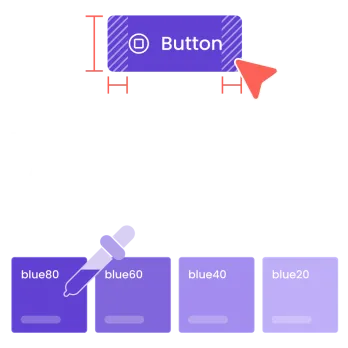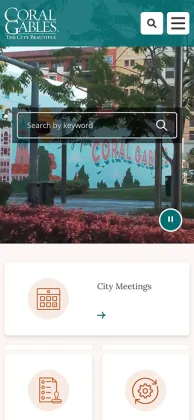Design systems & guidelines
Scalable, consistent and maintainable – design systems, built to last
Cohesive design
A well-executed, robust design system forms the backbone of elegant, consistent digital experiences that not only scale seamlessly but also evolve in sync with your product, business and users’ demands.
Zoocha's modular design systems are easy to maintain and manage, helping enhance collaboration across teams.
They’re also crafted to ensure design consistency across products and platforms – from emails and microsites to large-scale CMS-managed websites and mobile apps – joining up touchpoints with a cohesive, unified design language.
Why invest in a design system?
Consistency across products
Maintain a unified look and feel across your digital ecosytem, supporting brand recognition and trust with users.
Faster development cycles
Reduce duplication of effort, streamline workflows, and minimise inconsistencies.
Enhanced collaboration
Improve communication between design, development, and your digital and content teams.
Future-proofing
Benefit from a scalable, flexible future-ready system that grows and evolves with your digital products.
An atomic design & component-based approach
We follow atomic design principles, breaking interfaces into fundamental building blocks to create flexible, responsive UI components and patterns within an easy-to-access, evolvable library or ‘design system’.
This modular approach ensures:
- Scalability – Easily expand and adapt designs as products, features and content evolve.
- Efficiency – Reuse components to speed up design and development, and reduce wastage.
- Flexibility – Rapidly iterate on designs without compromising the overall structure
Storybook: A living digital Design System
To bridge the gap between design and development, we use Storybook, an industry-leading tool for managing UI components.
Storybook allows us to:
- Document components in a centralised library, ensuring correct usage and consistency in their application.
- Test UI components in isolation, reducing the risk of changes breaking things or causing surprises.
- Benefit from a single source of truth, great for collaboration between designers, developers, and stakeholders.
- Ensure accessibility and usability standards are met – before implementation.
By integrating Storybook into our design process, we create a single source of truth and ensure that all teams work from the same up-to-date design system.
Collaborative tools & version control
To maintain and scale design systems effectively, we use collaborative tools such as Figma, and comprehensive version control via Jira. Benefits of this include:
- Smooth handoffs between teams, with everyone aware of updates, changes and progress.
- Version control to track updates and support transparent workflows between design and development.
- Transparent governance of design guidelines, allowing for iterative improvements while maintaining brand identity.










